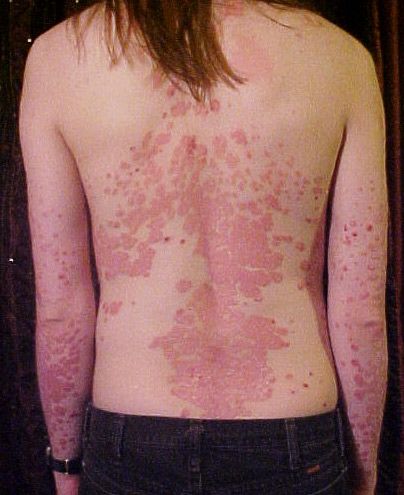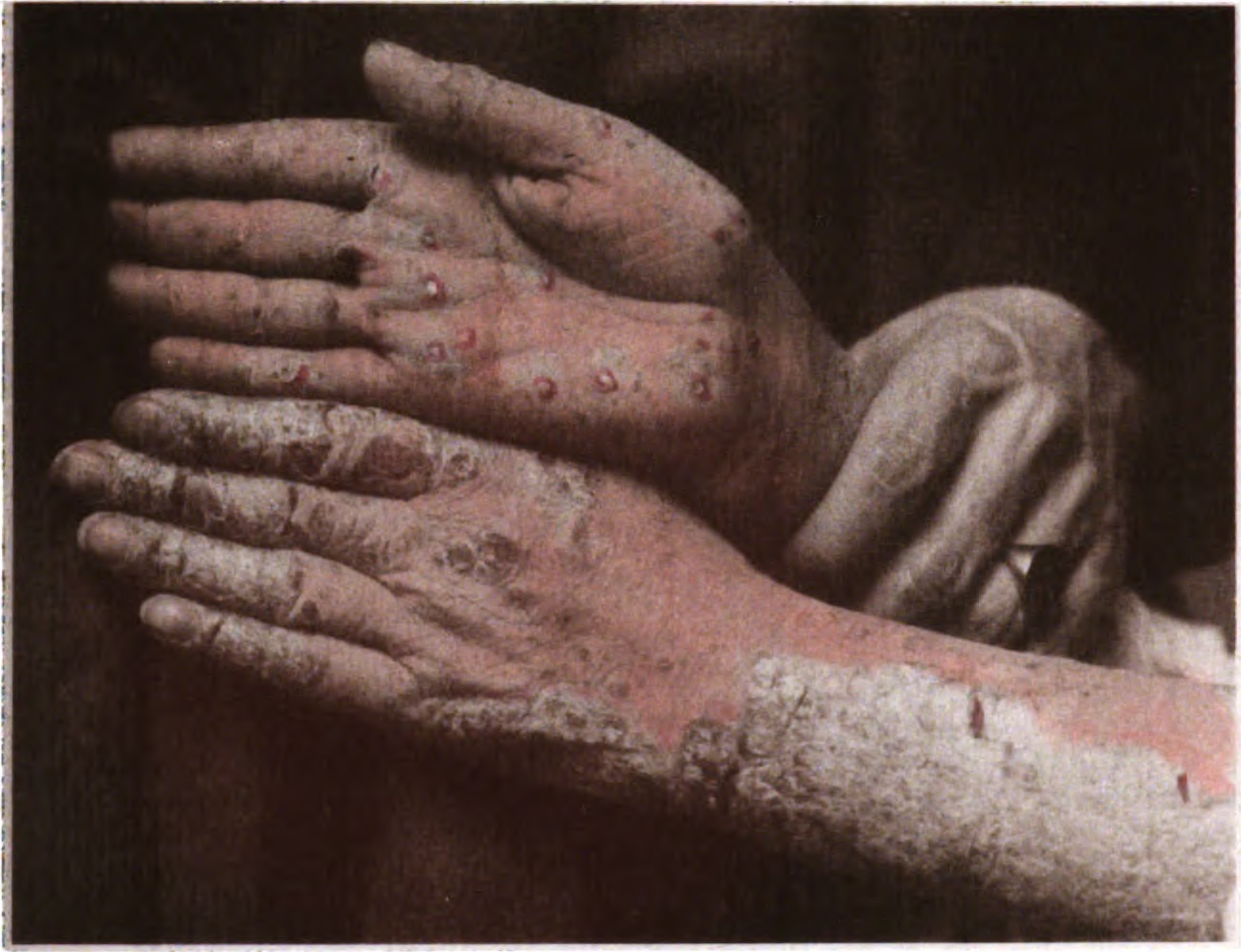Nearly eight million people in the United States suffer from a form of psoriasis, according to the
American Academy of Dermatology. When first experiencing a flare up, looking at psoriasis pictures can be the easiest way to identify the disease.
Guttate Psoriasis
About one in 10 people with psoriasis suffer from the guttate type. The lesions show up as small, red spots that dot the skin. They most often form on the chest, back, arms and legs but can also appear on the face, ears and scalp. Psoriasis pictures do not always show guttate psoriasis clearly since this condition can co-exist with thicker plaque psoriasis. It often comes on quickly after respiratory infections, skin injuries or periods of prolonged stress.
 |
| Guttate psoriasis spots on the back |
Plaque Psoriasis
A raised red rash with defined edges that won't go away may be plaque psoriasis. This form of the disease is the most common. The patches frequently itch and bleed, and patients often complain of a buildup of dead, white skin. Photos of plaque psoriasis often depict locations on the lower back, scalp, knees and elbows. It may also occur on the face, bottom of the feet or palms of the hands.
 |
| Scaley psoriasis on a man's neck. Courtesy Wikipedia. |
 |
| Red patches covering the back and elbows. Courtesy Wikipedia. |
 |
| Close-up of a psoriasis plaque with dead skin. Courtesy Wikimedia. |
Pustular Psoriasis
Pustular psoriasis pictures show white, pus-filled blisters. The condition often shows up on the hands and feet but can cover the rest of the body. The disease starts as red skin and the progresses to pustules and finally scaling. Common triggers include medications, pregnancy, infections, UV light exposure and stress.
 |
| White blisters on a woman's hands and forearms. Courtesy Wikimedia. |
Inverse Psoriasis
Inverse or intertriginous psoriasis frequently shows up with other forms of psoriasis. Pictures focus on red lesions, sometimes smooth and shiny, along folds at the armpits, elbows, knees, breasts, groin and belly button. Due to the location, constant rubbing and sweating can irritate the disease. It commonly happens in overweight men and women.
 |
| Red legions under folds of a woman's breasts. |
Erythrodermic Psoriasis
Erythrodermic psoriasis can be life-threatening, so people experiencing a flare-up should seek medical attention immediately. Patients with these disease look as if they've been burned. Identifying characteristics include severe redness over a large part of the body, shedding dead skin in sheets instead of small scales and severe pain and itching. Sufferers may also experience changes in heart rate and body temperature, especially on very hot or very cold days. Triggers include allergic reactions, severe sunburn, withdrawal from or introduction to certain medications, infections, alcoholism and stress.
 |
| Erythrodermic psoriasis on the hands and feet. Courtesy National Institutes of Health. |
Only a medical professional can properly diagnose psoriasis. The right doctor will discuss
treatment options and work with the patient for relief.







No comments:
Post a Comment